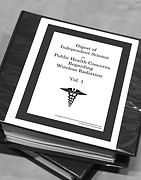

Smart Meters
Utility companies across the country are actively replacing their analog meters with wireless versions (known as "smart meters") that monitor your use of electricity, gas, and water, and report directly to the utility companies. But many people are reporting negative health impacts after the meters are installed.
There are many different types of smart meters, all utilizing radiofrequency (RF) radiation to transmit data to collection sites. How often they transmit, and how much radiation they emit, depends on the type of meter and its internal programming. Smart meters go by many names: AMR, ERT, AMI, “one-way digital” and “two-way digital.” All of these devices emit pulsed radiation. The only proven safe utility meter is a mechanical analog meter.
• "Smart" utility meters emit powerful bursts of RF radiation as they transmit information about your usage to the utility.
• The FCC allows smart meter manufacturers to average the bursts of radiation over time, making the exposure look much smaller and less dangerous than they are.
• Many states and utilities offer an "opt-out" option for individuals and families concerned about health impacts, and legislation to require an opt-out is pending in many states.
Fast Facts
Utility companies routinely claim that the amount of radiation emitted by their meters is about the same as a cell phone, but (a) cell phone radiation itself is not safe, and (b) that statement is only true if you average out the exposure over time. The fact is that most smart meters (especially electrical meters) emit fairly large bursts of energy with each transmission - a level which far exceeds safe exposure levels, but the Federal Communications Commission, and agency with no health experience or expertise, allows manufacturers to average the output of their meters over time. It's like saying the average wind speed in Tornado Alley is 6 miles per hour.
Smart meters are not safe. Children, pregnant women, and people with implanted medical devices are particularly vulnerable to the health impacts of exposure to RF radiation, especially the type of short-burst, high-level signals transmitted by smart meters. Many people have reported the development of adverse medical symptoms immediately after the installation of a smart meter. These symptoms mirror those documented in the medical literature from exposure to wireless radiation: headaches, insomnia, dizziness, inability to concentrate, nausea and heart irregularities.
"Multiple studies correlate RF exposure with diseases such as cancer, neurological disease, reproductive disorders, immune dysfunction, and electromagnetic hypersensitivity."
- American Academy of Environmental Medicine
If your home or apartment has a smart meter installed, we recommend that you move sleeping areas as far from the meter location as possible and avoid spending prolonged periods of time in rooms adjacent to the meter. In some single family homes, utility companies can mount the meter on an exterior pole rather than on the house itself.
In many areas, demand is growing for a smart meter opt-out option for families and individuals who are concerned about health impacts. Legislation for an "opt-out" has passed in Vermont and is pending in several other states to require utilities to offer such an option. Many groups concerned about security and privacy are also opposing the installation of these meters and demanding an opt-out.
Smart Meter Resources



Please visit GreenStreetNews.org for more podcasts
Click here to read some of the most recent independent, peer-reviewed studies on exposure to radiofrequency radiation and human health impacts.



